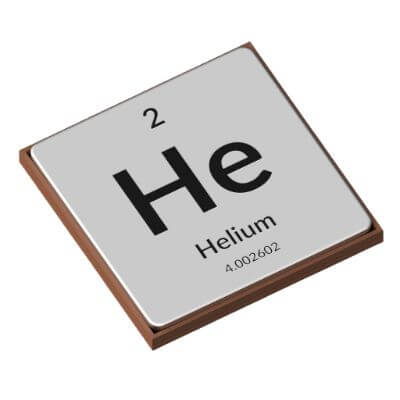Helium is on the far right-hand side of the periodic table in group 18 because its physical and chemical properties are most similar to those of the other group 18 elements. Periodic Table of Elements: The elements are arranged horizontally in order of increasing atomic weights. Those beneath each other have similar properties. Hydrogen (Atomic No.1) is omitted as it is unlike any other element. O IA IIA IIIA IVA VA VIA VIIA 9 10 11; 2 He helium: 3 Li lithium: 4 Be beryllium: 5 B boron: 6 C carbon: 7 N nitrogen: 8.
Interactive periodic table with up-to-date element property data collected from authoritative sources. Look up chemical element names, symbols, atomic masses and other properties, visualize trends, or even test your elements knowledge by playing a periodic table game! After hydrogen, helium is the second most abundant element in the universe. It is present in all stars. It was, and is still being, formed from alpha-particle decay of radioactive elements in the Earth.
Lithium is in the news. The 2019 Nobel Prize for chemistry was awarded to three scientists for transforming our lives and helping to save our climate.
We should all be able to recite like ABC the first three elements of the periodic table. Hydrogen has just one electron orbiting one proton. It is by far the most abundant element in the universe and was made in the Big Bang. The sun is about 75% hydrogen by weight, but every second it converts six hundred million tons of hydrogen into helium, the second element with two protons stuck together with two neutrons in its nucleus. About four million tons of that mass are converted into heat energy. Remember Einstein’s famous mass-energy conversion equation.
Helium, like hydrogen, is a gas at normal temperatures, light enough for party balloons and giving you a squeaky high voice if you inhale it. It was also made in the Big Bang, with more coming from that nuclear fusion reaction in stars. The solar energy we need to help reduce our use of fossil fuels is really nuclear fusion, from a steady reactor a safe 93 million miles away. But while the sun’s outpouring of energy is constant, at night Earth gets in the way. Storing some in the day to release at night helps. That’s where element number three – lithium – comes in.

The sun is a fusion reactor converting hydrogen, made in the Big Bang, to helium, the second element in the periodic table. Solar cells produce electricity, and the third element, lithium, is used in batteries that can store electricity and release it at night.
The sun is a fusion reactor converting hydrogen, made in the Big Bang, to helium, the second element in the periodic table. Solar cells produce electricity, and the third element, lithium, is used in batteries that can store electricity and release it at night. “Solar Panels” by Chandra Marsono is licensed under CC BY-NC-SA 2.0
Lithium’s nucleus has three protons stuck together with three or (usually) four neutrons. It is a metal, but so light it floats on water and soft enough to cut with a knife. It is the third element made in the Big Bang. All others come from exploding stars or colliding neutron stars. Lithium has two electrons in a close orbit like helium, but the third is farther out and easily removed. That leaves behind a lithium ion, positively charged because it has only two electrons, and it is smaller than hydrogen.
Our three Nobel laureates invented ways of making batteries using lithium, with metal and later with compounds. When you apply an electric current to charge the battery, lithium ions move from the cathode to the anode where they embed themselves, storing energy. When you use the battery, the ions flow back; electrons flowing the other way through wires or electronics complete the circuit.
The Nobel committee said: “Lithium-ion batteries are used globally to power the portable electronics that we use to communicate, work, study, listen to music and search for knowledge.” Thank you, science!
Hydrogen And Helium Periodic Table

Periodic Table Simple
A version of this article originally appeared in Positively Naperville.
